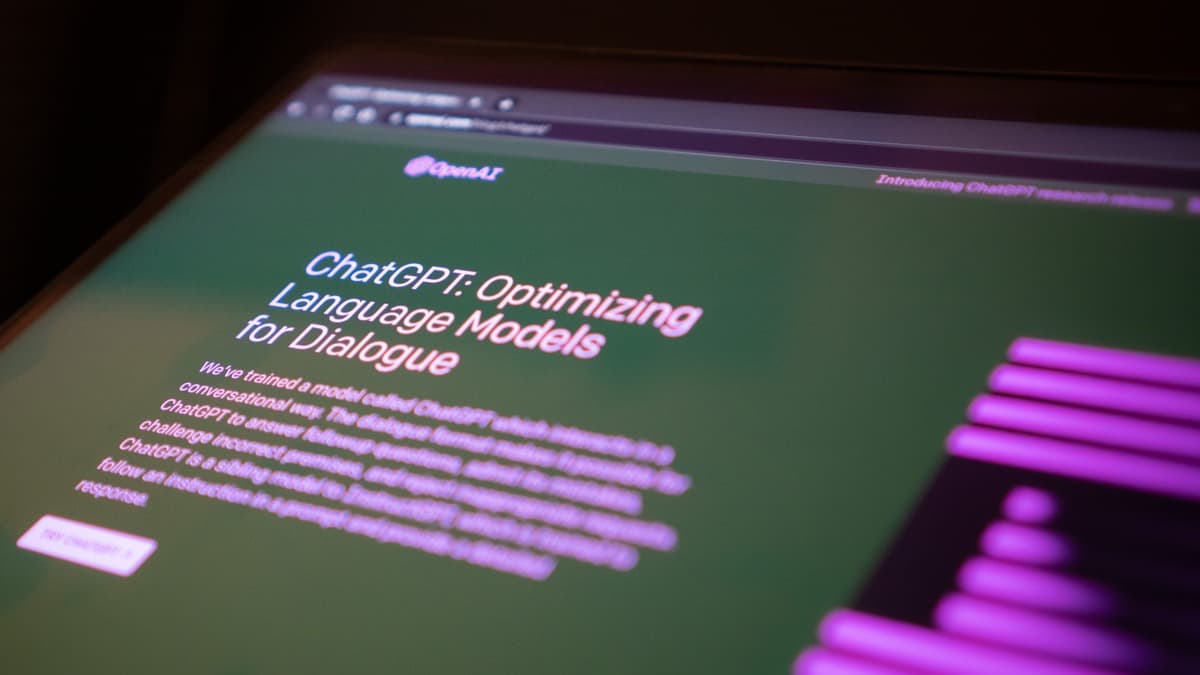In just a matter of months, ChatGPT went from relative obscurity to being the most discussed technology on the planet.
The powerful artificial intelligence tool from Open AI has garnered interest everywhere from media and content creators to legal firms and the public sector. Many people see the technology’s ability to rapidly create everything from high-quality written material to working computer code, as a total game changer.
As increasing numbers of people come to understand the power and capabilities of ChatGPT, the range of use cases within workplaces is likely to grow exponentially. Some of the areas in which it will have the most impact in coming months include:
Improving levels of customer service
Research shows that, when making contact with an organisation to seek service, nearly 80 per cent of people prefer to interact with a human rather than receiving an automated response. Frustrating, bot-based customer service is bad for a brand, however offering comprehensive human customer service is expensive. ChatGPT changes this completely.
The new AI tool can learn and build upon answers and responses. When connected to an internal database, it can deftly provide human-like responses to a wide variety of questions and help people to find the information they are seeking.
Streamlining the task of language translation
Current translation technologies can assist with short questions and commands and can interpret small blocks of text. While this is a help, ChatGPT has the reading and comprehension capabilities to understand longer materials and take translation to the next level.
The tool can determine an employee’s location and automatically translate pages of content into that person’s local language. For developers and other technical talent who don’t speak English or Mandarin, for example, this will save an immense amount of time, effort, and expense to bring their work to market.
There is also significant potential for ChatGPT to build automated assistive workplace technologies such as real-time screen readers and sign language translations for people with disabilities.
Summarising long and complex items
When it first appeared, email was supposed to speed up work correspondence so that people would have more time to focus on deeper work. Instead, it ends up consuming more and more time.
From emails to messages to reports, ChatGPT can summarise and deliver key information to busy employees. When integrated with other tools such as Word or Outlook, ChatGPT will be able to distil information and separate out what a staff member really needs to know.
It will be able to take an email, turn it into an action item, and place it into a workflow that is shared with a wider team. Less time will thus be spent responding to correspondence and playing catch-up which means more time spent on work that adds true value.
Rapid creation of quality content
As well as being able to quickly summarise written materials, ChatGPT can also create outgoing writing and visuals from email responses, reports, and external-facing online content. Staff may not be able to turn all of their writing duties over to ChatGPT, but they will definitely be able to unload a number of the more routine responsibilities and get writing ideas and support where they need it.
The tool can answer an email and fill out a leave request form or other in-house paperwork. It could also create a 10-step health and safety hazard report or a blog detailing business performance or a new trend.
In recent years, even the most technical of employees have been tasked with a degree of creative writing responsibilities in their communications and internal marketing of their work. ChatGPT can be a dependable partner to greatly alleviate that burden and, sometimes, remove it altogether.
Validation of software code
From workflow builds to suggestions, ChatGPT can kick off, review, and improve computer code. Whether getting a team started with a solid framework or drilling in on existing work to determine how to enhance and optimise, ChatGPT can support coding in much the same way it supports writing.
The tools will also help the growing ranks of citizen developers who have a great idea or insight but little or no formal training in programming. ChatGPT will quickly become a crucial tool to facilitate the work of these people and help them to achieve coding goals that were once beyond their reach.
It’s clear that the full impact of ChatGPT is still to be determined. Indeed, the true effects of generative AI on the workplace are more Wild Wild West right now as we begin to peel back the onion on compliant and regulated use. However, there is no question it has the power to reshape many activities within the modern workplace. As the tool’s capabilities continue to grow, expect its usage and impact to expand even further.
Keep up to date with our stories on LinkedIn, Twitter, Facebook and Instagram.

